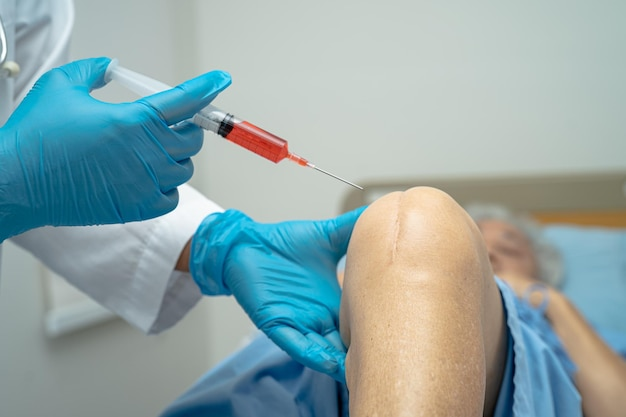If you’re curious about new ways to treat ACL tears, you’re in the right place. What is PRP Therapy: A Non-Surgical Solution for ACL Tears? It’s a question on many minds, especially since these injuries can be quite common among active individuals. Understanding alternatives to surgery is important. PRP therapy offers a path that might be gentler and easier to recover from. In this blog, we’ll break down the PRP process and show you how it stands apart from traditional surgical methods.
Understanding ACL Tears and Introducing PRP Therapy
An ACL tear refers to an injury affecting the anterior cruciate ligament, which connects the thigh bone to the shin bone. ACL injuries frequently occur during sports that involve sudden stops, jumps, or changes in direction. This means athletes and even recreational sports enthusiasts are at risk. These tears often come with pain, swelling, and a limited range of motion, making it hard to continue with normal activities.
Addressing ACL injuries early can prevent long-term issues. Many times, the first thought is surgery. But, there’s another option: PRP Therapy for ACL Tears benefits. Here’s a quick look at how it starts. Platelet-Rich Plasma (PRP) therapy has roots in modern medicine, where it leverages the body’s own healing components.
In PRP therapy, a small sample of your blood is taken. The blood is then processed to concentrate the platelets, rich in growth factors, which aid in recovery and healing. When injected into the site of the tear, these platelets can speed up healing. By promoting the body’s natural healing process, PRP is becoming popular in sports and orthopedic medicine.
The Science and Benefits of PRP for ACL Injuries
Let’s dive a bit deeper into the science. PRP Therapy for ACL Tears procedure taps into the body’s own resources to mend injuries. By using platelets, PRP helps repair damaged tissue. These platelets contain growth factors that trigger cell replication and tissue renewal. Curious minds ask, why should PRP work better than surgery in some cases?
For starters, PRP Therapy for ACL Tears recovery time can be considerably shorter. Since it’s non-surgical, the recovery tends to be smoother. Plus, it has anti-inflammatory properties that help cool down injuries, reducing swelling and pain while promoting ligament repair.
Here’s why many individuals might choose PRP over surgery:
- Minimal invasion: Unlike surgery, PRP involves a simple injection procedure.
- Lower downtime: Patients can often return to activities sooner.
- Fewer risks: Surgery comes with potential complications, whereas PRP poses minimal side effects.
Success stories are pouring in from sports folks and regular people alike. Case studies present encouraging results. People have experienced improvement with less pain and more movement. There’s also research underway, hinting at promising outcomes. With so much going for it, PRP therapy enjoys a growing reputation as a viable alternative for handling ACL tears.
Navigating Your PRP Therapy Journey: What to Know and Expect
Considering PRP Therapy for ACL Tears risk factors? It’s natural to want to know what lies ahead. Luckily, understanding the PRP journey is straightforward. Here’s what it typically involves:
- Consultation: Start by discussing your injury and health status with a doctor.
- Blood draw: A small sample of your blood is collected.
- Processing: The blood is spun in a machine to concentrate the platelets.
- Injection: The concentrated platelets are injected into the damaged tissue.
Once you have the injection, realizing what to anticipate in recovery helps. PRP Therapy for ACL Tears efficiency often shines in how quick and smooth recovery can be. Keeping up with rehab exercises is vital. Following your doctor’s advice ensures the best outcomes.
While PRP is generally safe, being informed about potential risks is wise. Talk to your doctor about any concerns. Mostly, risks are minimal compared to surgery, which involves healing from incisions and is more invasive.
Looking ahead, PRP therapy continues to develop. Experts are keenly exploring its possibilities, aiming to enhance its benefits and broaden its use. Staying informed about these advancements means you never miss out on potential therapies that could make all the difference in dealing with ACL injuries efficiently.
In conclusion, What is PRP Therapy: A Non-Surgical Solution for ACL Tears? It’s a modern take on healing, one that uses the body’s tools to get better naturally, without the hassling cut of a scalpel. Whether you’re in sports or just someone looking to feel better, PRP presents an exciting option worth exploring further.

